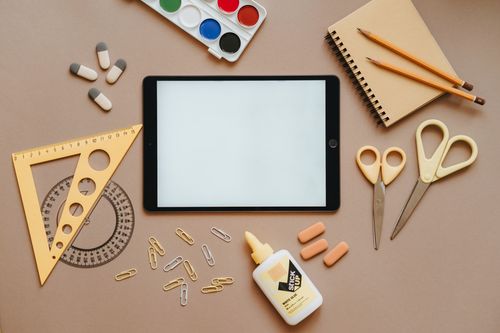Walking out of Best Buy, my 7-year-old strength barely held onto my new laptop. It was bulky and expensive—a whopping $500. I was beyond excited. My parents felt guilty, with all my friends having some sort of technology in their houses, they didn’t want me to feel left out and went out to buy me my own laptop. That was how they were. Always looking out for me, even if it meant the financial burden would be heavier on them.
Now, as a junior in high school, I look back on the pure joy a younger me experienced with new technology. That laptop still sits in my living room, collecting dust but working completely fine. Sure, its fan runs 24/7 and it boots a bit slow, but I didn’t have the heart to throw it away. This laptop allowed me to play Transformice with my friends, film short videos of me singing at age 10, and eventually pushed me all the way into high school.
I never blamed my parents for not being able to get me the latest iPhone every September or buying a WiiU to play Just Dance like every other kid in the 2000s. Not constantly getting new technology meant I enjoyed every present and gift just a bit more than others. Being “low-income” wasn’t something I loathed. It was a part of who I was, even if it meant my family needed more help than others.
A Low-Income Student’s Reality
My uses for technology as a seven-year-old were excessive and for fun. I wanted gaming consoles to play with my friends and maybe watch some YouTube videos. But now, low-income students without technology are barred from pursuing their right to education. With classes meeting virtually and homework to be completed online, our situation with technology is different now. It once was for leisure, but now it’s become a necessity for daily life.
Low-income families, already in a state of financial struggle, have been hit even harder by the pandemic, now struggle in funding the basics for their children’s education. This means students lack school supplies, a stable wifi connection, or even headphones that allow them to focus on their work.
According to the U.S. Census and McKinley Company, Black and Hispanic students have fallen behind in coursework by 9-10 months, and low-income students from all backgrounds have fallen behind by over a year, stemming from the inability to focus at home with distractions or lack of resources to understand course material. Without the needed supplies, students find themselves struggling to complete assignments and as a result, fall behind significantly in class.
How a Microgrant Can Help
With Close the Gap’s 2021 Distance Learning Microgrant, we hope to provide low-income students with the materials they need for distance learning. Last year, Close the Gap awarded 15 deserving high school students over $2,100 worth of Chromebooks and distance learning supplies. We’re back again to help bridge the digital divide during COVID-19.
This year, selected students will be awarded:
- 5 Chromebooks
- 5 pairs of noise-canceling headphones
- 5 supply kits
To learn more about how to apply for a microgrant, click here.
About the author
Janet is a senior at Mt. Eden High School and Microgrants Program Manager Intern at Close the Gap. Her passions include helping others and leading services events for under-represented people in need—an example being her Spark 2020 Social Impact Project to bridge the gap between high-school students and financial literacy resources.
As a low-income and first-generation student, she understands the difficulties that students experience when faced with economic hardships and a lack of resources. At Close the Gap, she hopes to help students like herself overcome such challenges while gaining experience and knowledge to continue aiding others as well.

